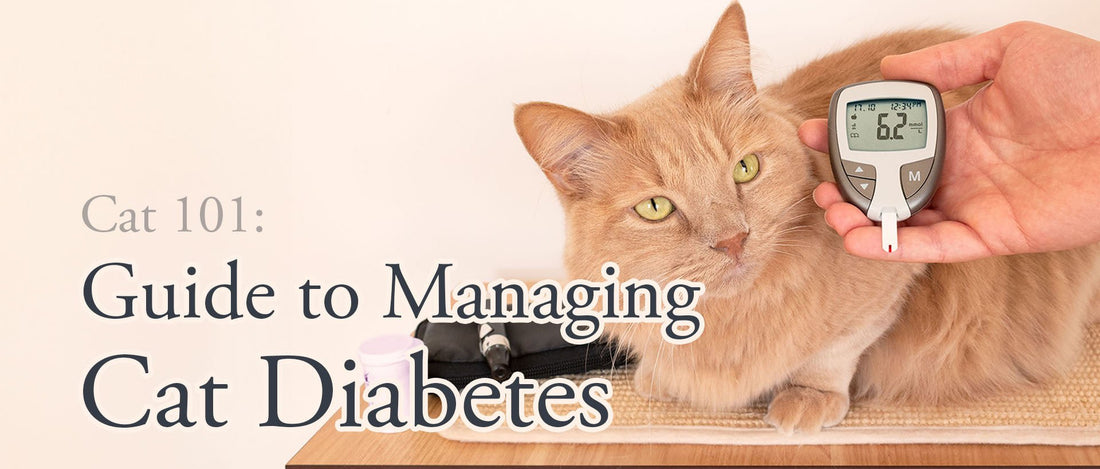
Cat 101: Guide to Managing Cat Diabetes
Share
Diabetes mellitus is a common endocrine disorder in cats, affecting their ability to regulate blood sugar (Blood glucose) levels. While a diabetes diagnosis can be overwhelming, with proper treatment and care, many cats can live happy, healthy lives for a long time.
As previously took care of one of my cats with this problem, I sincerely hope this post will help you and your cat overcome this condition. In this blog post, we'll explore the essential aspects of caring for a diabetic cat.
Understanding Feline Diabetes
Diabetes in cats is caused by a lack of insulin, a hormone produced by the pancreas that regulates blood glucose levels. Without sufficient insulin, glucose builds up in the bloodstream instead of being used for energy, leading to various health issues.
Cats with diabetes may exhibit symptoms such as increased thirst and urination, weight loss despite a good appetite, and sleeps. If left untreated, diabetes can lead to serious complications like nerve damage, kidney disease, and even coma. Early diagnosis and proper management are crucial for your cat's well-being.
Insulin Therapy

The primary treatment for feline diabetes is insulin therapy. Most cats require one or two insulin injections per day, administered subcutaneously (under the skin) by their owners. Your veterinarian will work with you to determine the appropriate insulin type and dosage based on your cat's individual needs. While giving injections may seem daunting at first, with proper training and support, most owners quickly become comfortable with this routine.
Dietary Management

While insulin injections are the instant solution, Diet plays the most significant role in managing feline diabetes for long. Cats with diabetes often benefit from a low-carbohydrate diet, as this helps regulate blood sugar levels and reduces the need for insulin. Your veterinarian may recommend a prescription diabetic cat food or a low-carb kitten formula. Consistency is key, so aim to feed your cat the same type and amount of food at the same time each day. Some other daily supplement may also help, please ask your veterinarian for more details
Monitoring and Veterinary Care
Regular monitoring and veterinary check-ups are essential for managing your cat's diabetes. Your vet may recommend periodic blood tests to assess your cat's glucose levels and adjust insulin doses as needed. Home monitoring, such as checking urine for glucose and ketones or using a glucose meter, can also help you track your cat's progress between appointments.
Be sure to report any changes in your cat's appetite, water intake, urination, or weight to your veterinarian. Sudden lethargy, vomiting, or lack of coordination may indicate a medical emergency, which requires immediate veterinary attention.
It is a good idea to record related details. You could setup some excel sheet to make it digitally or just go for the traditional way, write down in notebook. Based my previous experience, I have created a Diabetes-Journal here, if you prefer this hand writing way.
Remission and Quality of Life
In some cases, diabetic cats may go into remission, where their diabetes is well-controlled without the need for insulin injections. This is more likely in cats that are overweight, as weight loss can improve insulin sensitivity. However, remission is not guaranteed, and diabetes may recur at any time.
With proper management, most diabetic cats can maintain a good quality of life. Provide your cat with a comfortable, stress-free environment, and exercise.
Remember, every cat is unique, and managing diabetes requires patience, dedication, and close collaboration with your veterinarian. By understanding the basics of feline diabetes and following your vet's guidance, you can help your cat live a happy, healthy life despite this condition.



